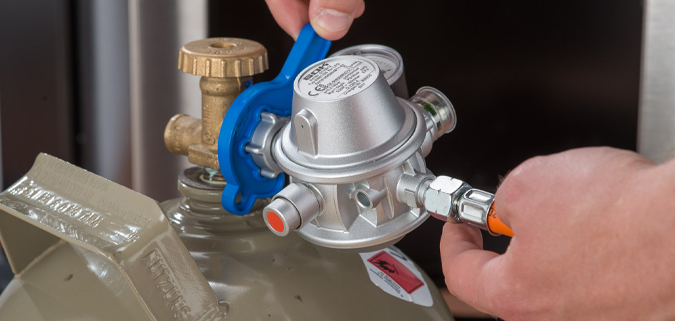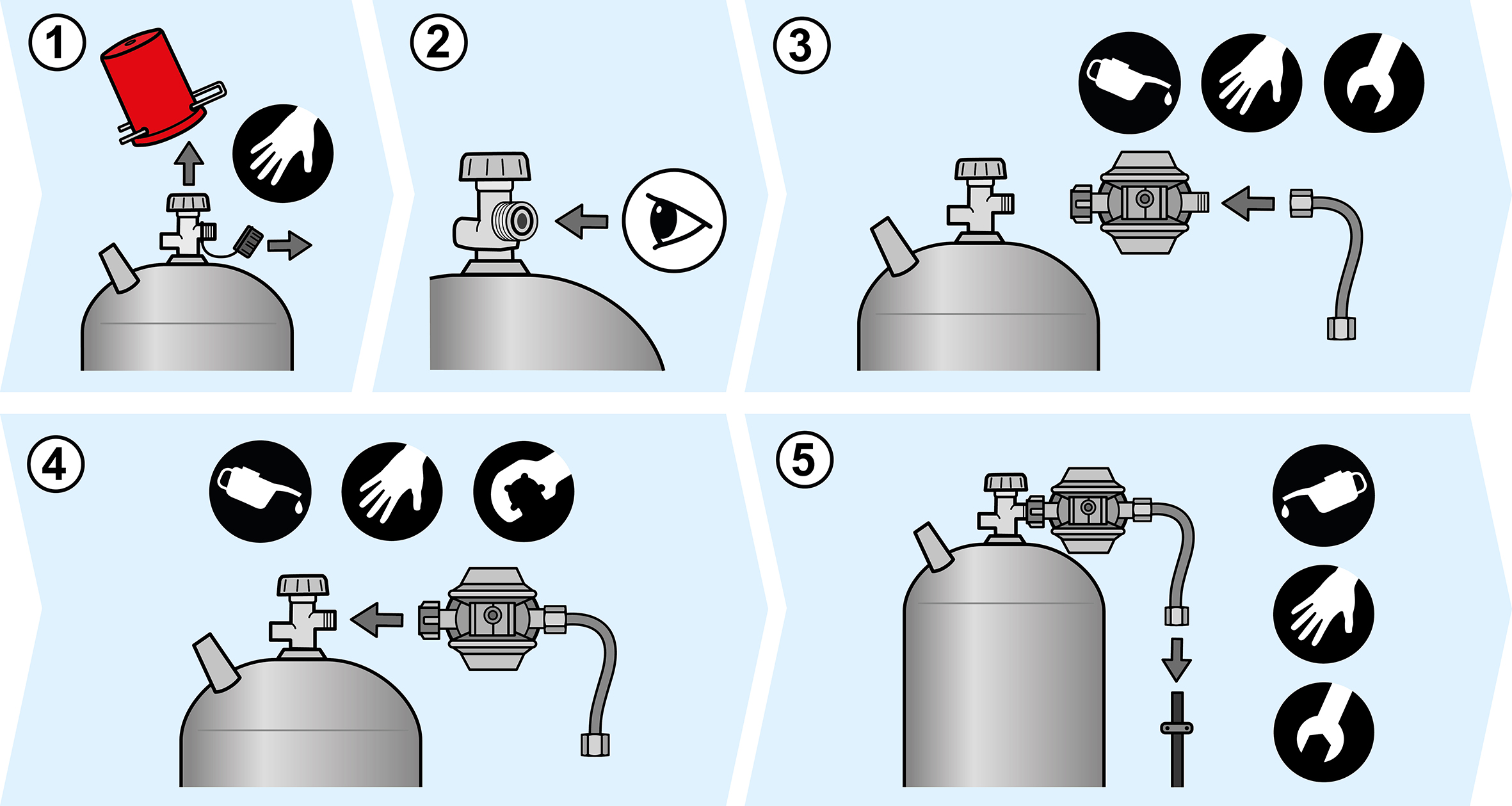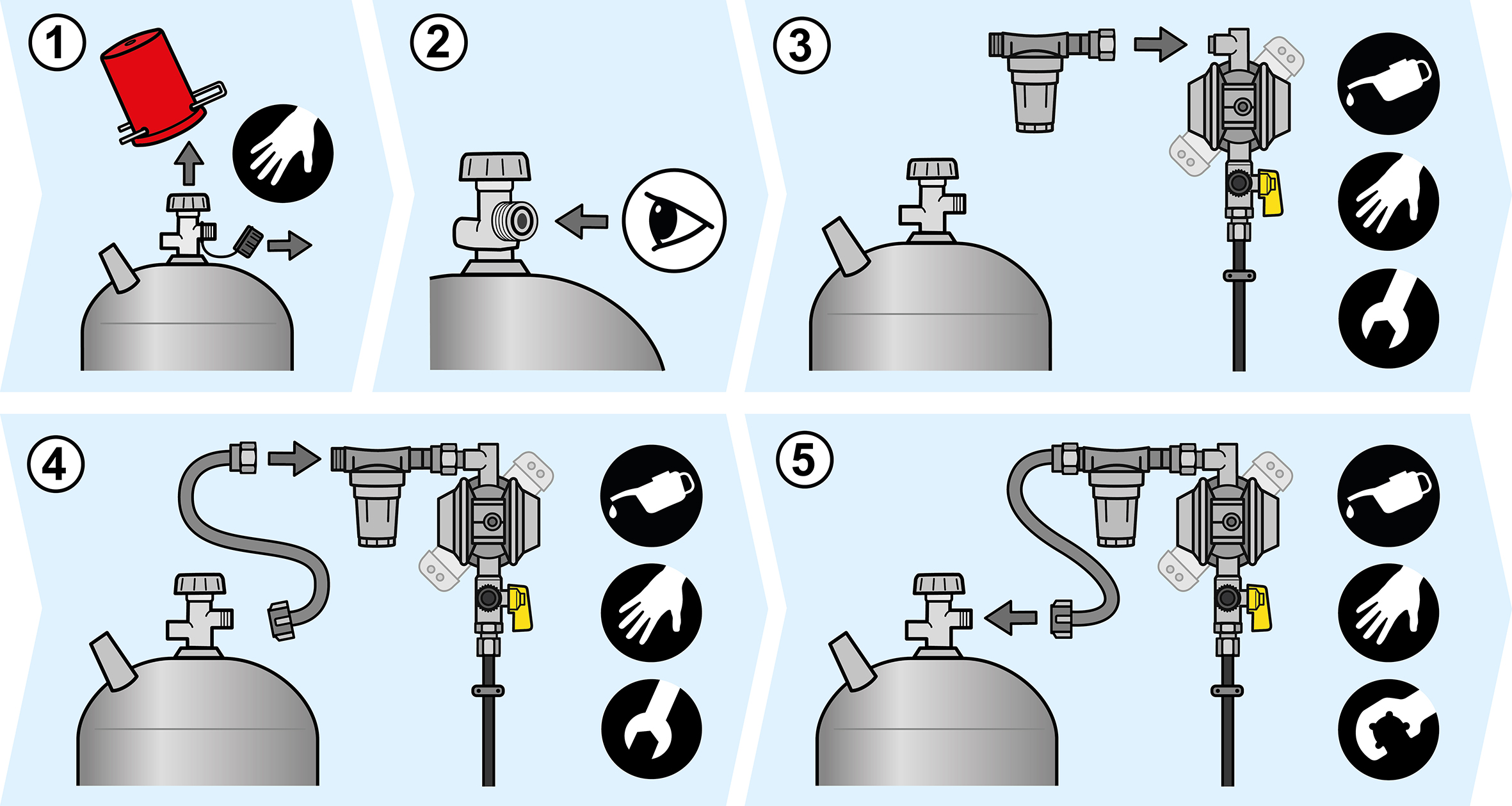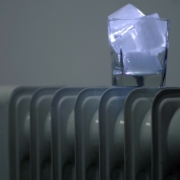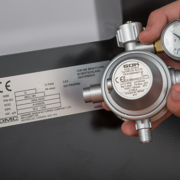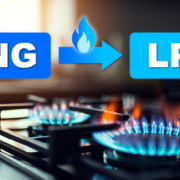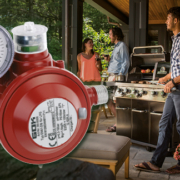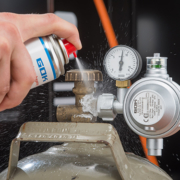How do I connect a gas cylinder in a recreational vehicle (rv) or caravan safely and correctly?
Connecting an LPG cylinder correctly – what might be a piece of cake for experienced campers can be something of a challenge for new campers. Where does the pressure reducer go, and where does the gas hose go? What system attachments are there? How tightly do I have to tighten the connections, and do I need tools? We answer the questions.
Pressure reducer directly on the cylinder
It is probably the most widely used system configuration: the pressure regulator directly on the gas cylinder valve, gas hose to the outlet of the gas regulator, and a connection from the gas hose to the fixed piping of the recreational vehicle (rv) or caravan.
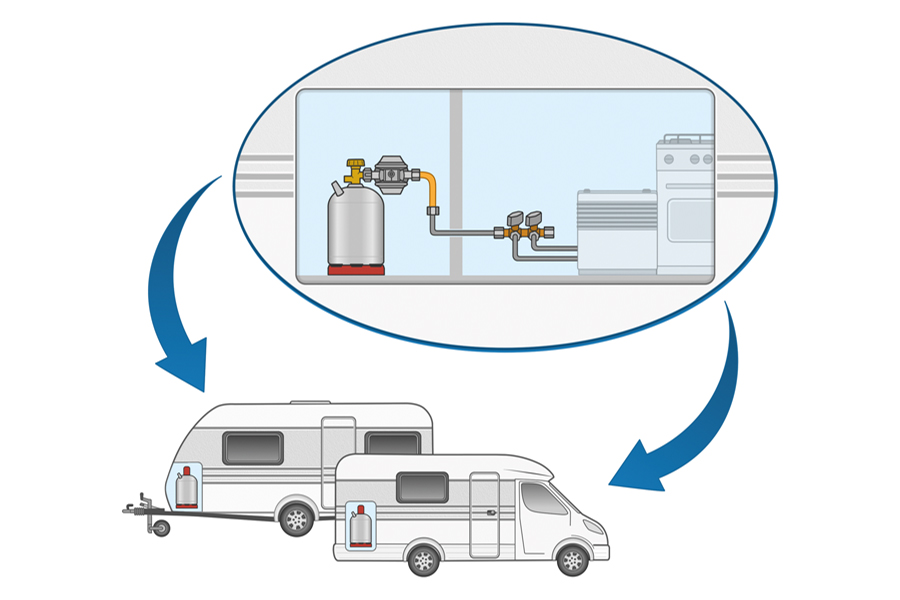
The pressure reducer is connected directly to the LPG cylinder in the cylinder crate of the motor caravan or caravan.
Two tips before the installation:
- Please ensure the integrity of the components used, such as the pressure reducer, gas hose and gasket on the cylinder valve. If the hose is porous, for example, or has an obviously damaged area, do not connect it. The same applies to the pressure reducer. If the inlet or outlet connector is completely deformed or damaged because it has been dropped, for example, it must not be used for installation purposes.
- Look at the date of manufacture of the components. Information is provided on both the hose and the pressure regulator, indicating when they were manufactured. If they are over ten years old, please do not connect them. Find out why below.
To connect the LPG system including gas cylinder correctly and safely, please proceed as follows:
- Remove the protective cap from the gas cylinder and loosen the sealing nut from the gas cylinder valve.
- Check the connection screw joint and the gasket of the gas cylinder valve.
- Now connect the matching connection of the gas hose to the outlet connector of the pressure reducer. Hand-tighten the connection and then tighten it a little more with the spanner.
- Screw the pressure reducer onto the thread of the gas cylinder valve. Caution, left-hand thread! To connect the pressure reducer to the gas cylinder, it is necessary for you to turn the nut anti-clockwise.
- Hand-tighten the coupling nut of the pressure reducer and then tighten it a little more with the MiniTool, and then connect the outlet connector of the gas hose to the piping of the motor caravan or caravan.
A drop of oil can and/or should be applied to the thread on all the connections of a gas system.
A final leak-tightness test is indispensable for the safety of the system. Here is an example of how you check the LPG system in the recreational vehicle (rv) or caravan for leak-tightness:
Wall-mounted pressure reducer
If the pressure reducer or the gas control system or changeover system is not mounted directly on the gas cylinder but on the hull wall, the design is fundamentally different.
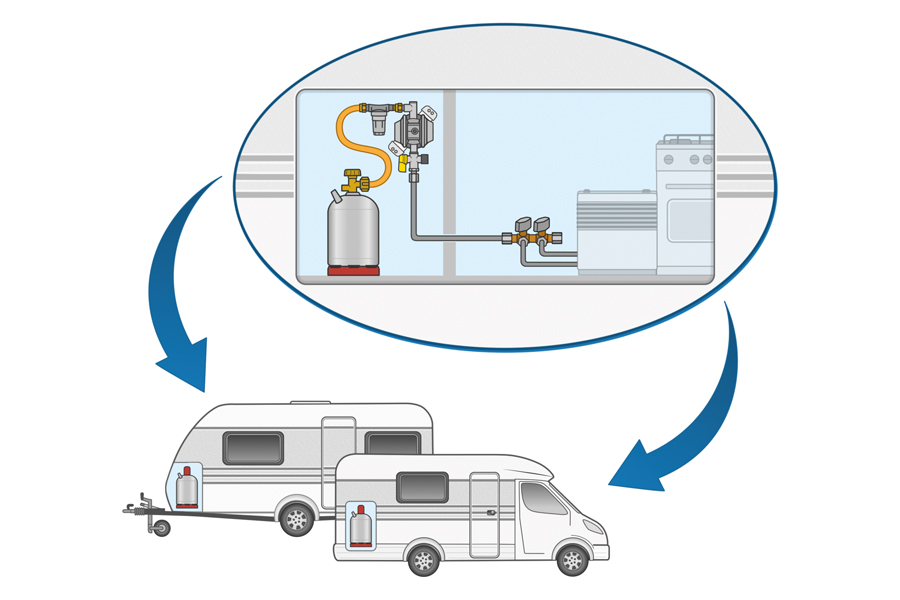
The pressure reducer is mounted on the wall and connected to the gas cylinder in the (gas) cylinder case of the recreational vehicle (rv) or caravan with a high pressure hose assembly. A single-cylinder system is shown here.
For a single-cylinder system, campers require the following:
- a high-pressure hose line with a suitable connection
- optionally a gas filter and
- a pressure regulator for the wall assembly.
For a two-cylinder system, the following are required:
- two high-pressure hose lines with a matching connection and the option of two gas filters,
- a gas control system (including pressure reducer and automatic changeover valve), or
- a changeover unit plus a separate pressure reducer.
A brief update: If you want to operate the LPG system while driving or to simply leave the gas cylinder open on a permanent basis, you will need two mandatory safety valves. Read more in this post:
Two tips before the installation:
- Please ensure the integrity of the components used, such as the pressure reducer, gas hose and gas cylinder valve.
- If the hose is porous, for example, or has an obviously damaged area, do not connect it. The same applies to the pressure reducer. If the inlet or outlet connector is completely bent or damaged because it has been dropped, for example, it must not be used for installation purposes.
- Look at the date of manufacture of the components. Information is provided on both the hose and the pressure regulator, indicating when they were manufactured. If they are over ten years old, please do not connect them. Find out why below.
To connect the LPG system including gas cylinder correctly and safely, please proceed as follows:
- Remove the protective cap from the gas cylinder and loosen the sealing nut from the gas cylinder valve.
- Check the connection screw joint and the gasket of the gas cylinder valve.
- If you make optional use of gas filters, please connect these to the pressure regulation system which is located on the wall first. Simply hand-tighten the nut and then tighten it a little more with the spanner.
- Now connect the appropriate connection of the high pressure hose assembly to the wall-mounted pressure regulation system or the wall-mounted pressure reducer (optionally: the gas filter). Hand-tighten the coupling nut and then tighten it a little more with the spanner.
- Screw the high pressure hose assembly onto the gas cylinder valve with the matching connection. Caution, left-hand thread! To connect the gas hose to the gas cylinder, it is necessary to turn the nut anticlockwise. Hand-tighten the coupling nut of the gas hose on the gas cylinder valve and then tighten it a little more with the MiniTool.
- If you have a two-cylinder system, you must repeat steps 1 to 5 for the second side (step 3 is optional).
A drop of oil can and/or should be applied to the thread on all the connections of a gas system.
A final leak-tightness test is indispensable for the safety of the system. Here is an example of how you check the LPG system in the recreational vehicle (rv) or caravan for leak-tightness:
Which tool?
If you only want to change or connect the gas cylinder, all you need is the MiniTool or a suitable tool (screw aid) to connect the coupling nut to the gas cylinder valve (never use a pipe wrench!).
If you still need to connect other system components, the standard set of spanners is usually completely sufficient.
Why the date of manufacture of the components is important…
The technical rule “Worksheet DVGW G 607 (A)” specifies that system parts that are subject to wear must be replaced no later than ten years after their date of manufacture. These include pressure regulators, automatic changeover devices and hose assemblies.
These posts will help you to avoid missing the replacement date:
